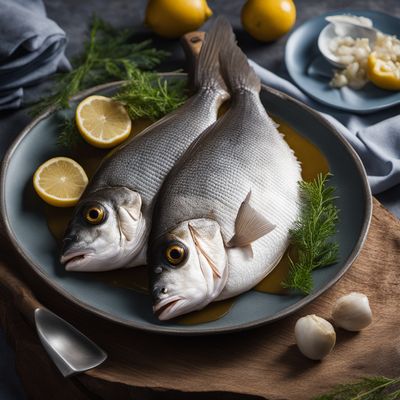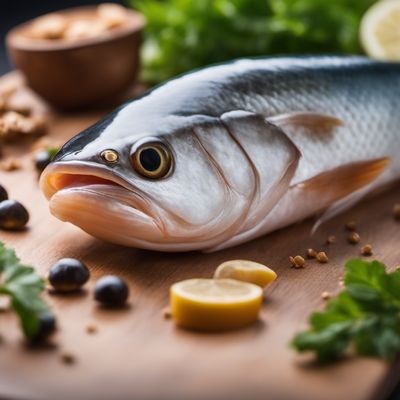
Ingredient
Red drum
The Southern Symphony
Red drum has a firm yet tender texture with large flakes that easily separate when cooked. The flesh is white to off-white in color and has a slightly sweet and nutty taste. Its appearance is characterized by a reddish or coppery hue on the skin, which fades to a lighter color on the belly.
Origins and history
Red drum is native to the Atlantic Ocean and Gulf of Mexico, particularly along the southeastern coast of the United States. It has a rich history in Southern cuisine and is often associated with dishes from Louisiana, Texas, and the Carolinas. Red drum has also gained popularity in recreational fishing due to its size and fighting ability.
Nutritional information
Red drum is a good source of lean protein and essential nutrients such as omega-3 fatty acids, vitamin D, and selenium. It is relatively low in calories and fat, making it a healthy choice for seafood lovers. However, it is important to be mindful of potential mercury contamination, especially for pregnant women or individuals with compromised immune systems.
Allergens
Red drum is a type of fish and may cause allergic reactions in individuals with seafood allergies. It is important to exercise caution and consult with a healthcare professional if you have any known allergies or sensitivities.
How to select
When selecting red drum, look for fish that has clear, bright eyes, shiny skin, and a fresh, mild aroma. The flesh should be firm to the touch and bounce back when pressed. Avoid fish with discolored or slimy skin, as well as any strong fishy odor.
Storage recommendations
To maintain the freshness and quality of red drum, it is best to store it properly. Keep the fish refrigerated at temperatures below 40°F (4°C) and consume it within a day or two of purchase. If not planning to use it immediately, red drum can be stored in the freezer for up to three months.
How to produce
Red drum can be produced through commercial fishing or recreational angling. For individuals interested in catching red drum, it is important to adhere to local fishing regulations and obtain the necessary permits or licenses. As for farming, red drum aquaculture is practiced in some regions, providing a sustainable source of this popular fish.
Preparation tips
Red drum can be prepared in various ways, including grilling, baking, broiling, or pan-searing. It pairs well with a variety of flavors and ingredients, such as citrus, herbs, garlic, and butter. Red drum is often featured in dishes like fish tacos, ceviche, or blackened fish. It can also be used in soups, stews, or as a substitute for other white fish in recipes.
Culinary uses
Red drum is commonly used in Southern and Gulf Coast cuisines, particularly in dishes such as blackened redfish, redfish courtbouillon, or redfish on the half shell. It is also a popular choice for fish tacos, seafood gumbo, or grilled fish fillets. The versatility of red drum allows it to be incorporated into a wide range of recipes and cooking styles.
Availability
Red drum is commonly found in the coastal waters of the southeastern United States, including states like Louisiana, Texas, Florida, and the Carolinas. It is also available in some seafood markets and specialty stores that source fish from these regions.
More ingredients from this category » Browse all

Bream, silver
Silvery Delight

Lizardfishes
The Versatile Delicacy from the Sea

Drums
The Rhythm of Drums

Emperors
The Majestic Delicacy

Bombay-duck
The Delicacy of the Arabian Sea

Bogue
The Versatile Bogue: A Hidden Gem of the Sea

Sea catfishes
Sea Catfish: A Versatile Delicacy from the Deep

Salema
The Versatile Salema

Snappers
The Irresistible Crunch of Snappers

Surgeonfish
The Ocean's Bounty

Dentex
The King of the Mediterranean: Discovering Dentex

Yellow croaker
The Golden Catch